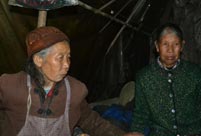

BEIJING, March 27 -- Chinese technology firms and equipment makers are gaining more and more traction overseas, propelled by the country's drive to realize a shift from low-end manufacturing onto construction into innovation hub for high-end technology.
As the government highlighted in a recent executive meeting of the State Council (the Cabinet), China needs to accelerate implementation of the "Made in China 2025" strategy by raising product and service standards in a bid to promote the economy to a medium-to-high level.
A mature equipment manufacturing industry could inject new momentum to China's economy under the "new normal."
The government report for 2015 delivered at an annual session of the National People's Congress (NPC) in early March said the country encourages its companies to participate in overseas infrastructure projects and engage in cooperation with their foreign counterparts in building up production capacity in a bid to increase the international market share of China's sectors of railways, electric power generation, telecommunications, engineering machinery, automaking, aircraft production, electronics and other equipment manufacturing.
No sector better symbolizes China's shift from a nation of labor intensive manufacturing onto one that excels in the high-tech field than high speed rail (HSR), which has already become a new "image card" for China.
The country's railway transportation industry is seeing great opportunities to export its technology, as China is engaging itself in discussions with Russia, Mongolia, India and Thailand on railway cooperation.
Huang Bin, an expert at Thailand's think tank KAITAI Research Center, said China's railway industry enjoys some prominent advantages and a late-mover edge as it is capable of offering a full range of ancillary equipment and has experience in operation uder different climate and terrain conditions. What is more important is that its products are always highly efficient and cost-effective.
In December 2014, China and Thailand inked a memorandum of understanding (MoU) on railway cooperation, agreeing to jointly build Thailand's first standard-gauge railway lines with a total length of more than 800 km.
The railway line, linking the Nong Khai Province in northern Thailand and the Map Ta Phut Port in southern Thailand, will be built totally with Chinese technologies, standards and equipment.
In January 2015, Kenya's Mombasa-Nairobi railway line was officially put into operation.
The 480-km railway line, built by China Road and Bridge Corporation, is the first to completely adopt Chinese standards outside the world's second biggest economy, and it is said to be the largest infrastructure project in the country since the independence of Kenya.
Always upholding the win-win principle, China actually has a fairly long history of railway cooperation with other countries. Officials from the Argentine province of Chubut recently revealed that they have been negotiating with some Chinese companies on possible railway cooperation.
The chairman of the Argentine-Chinese chamber of production, industry and commerce, Carlos P. Spadone said recently that no one wants to lose the opportunity to hitch a ride aboard China's economic development.
Over the years, China's railway transportation industry has witnessed earth-shaking transformation, as evidenced by its state-of-the-art technologies and equipment.
In 2014, the export contract value of China's top two bullet train makers, China South Rail Corporation (CSR) and China North Rail (CNR), exceeded three billion U.S. dollars, a 60 percent increase from 2013. They have recently announced that they would merge into a new company in a bid to accelerate overseas expansion.
The railway sector is just a snapshot of China's fast-evolving equipment manufacturing industry, as an increasing number of Chinese equipment makers and high-tech firms are "going global," offering cost-effective and quality products to regions and countries around the world.
In October 2014, Romania and China General Nuclear (CGN) signed a joint letter of intent to build two new reactors in Romania's Cernavoda nuclear plant for which the Chinese company has been designated as an investor.
Chinese nuclear power companies have also managed to gain ground in South Africa, Argentine and Turkey, as the country has formally launched its first indigenous nuclear power reactor design.
In August 2014, China National Nuclear Corporation announced that China's own-brand third-generation reactor "Hualong One" has passed through experts review to become the country's independent nuclear power technology that could be exported.
 J-11 fighters in air exercise
J-11 fighters in air exercise Beauties dancing on the rings
Beauties dancing on the rings Attendants-to-be join Mr. & Miss Campus Contest
Attendants-to-be join Mr. & Miss Campus Contest Beijing's toughest anti-smoking law takes effect
Beijing's toughest anti-smoking law takes effect Family lives in cave for about 50 years in SW China
Family lives in cave for about 50 years in SW China PLA soldiers operating vehicle-mounted guns in drill
PLA soldiers operating vehicle-mounted guns in drill Blind carpenter in E China's Jiangxi
Blind carpenter in E China's Jiangxi China hosts overseas disaster relief exercise for the first time
China hosts overseas disaster relief exercise for the first time 20 pairs of twins who will become flight attendants in Sichuan
20 pairs of twins who will become flight attendants in Sichuan Obama is sowing discontent in S.China Sea
Obama is sowing discontent in S.China Sea Rescuers work through night to reach cruise ship survivors
Rescuers work through night to reach cruise ship survivors Driving through limbo
Driving through limbo Facing down MERS
Facing down MERSDay|Week